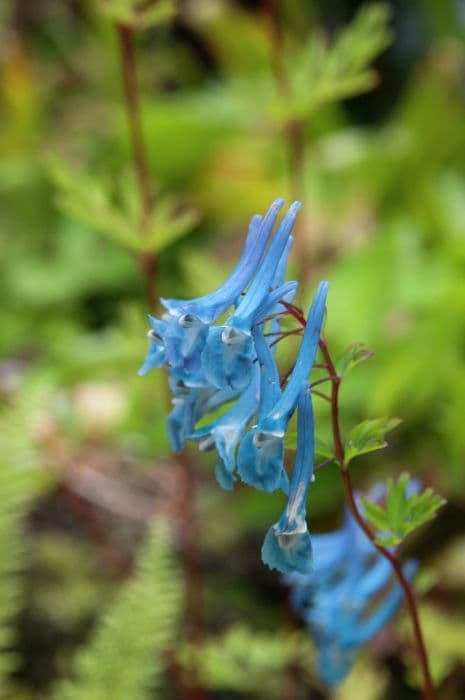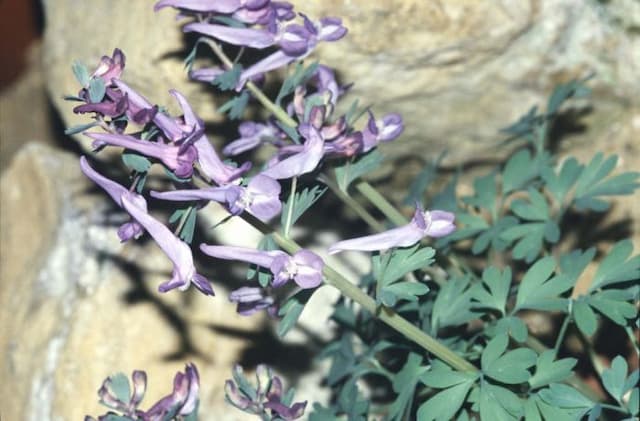Oriental poppy 'Royal Wedding' Papaver (Oriental Group) 'Royal Wedding'

ABOUT
'Royal Wedding' is an erect, deciduous perennial, to 85cm tall, with bristly, divided, grey-green leaves and single, pure-white flowers with a purple-black blotch at the base of each petal
About this plant
 Names
NamesFamily
Papaveraceae
Synonyms
Oriental Poppy, Royal Wedding Poppy
Common names
Papaver orientale 'Royal Wedding'
 Characteristics
CharacteristicsLife cycle
Perennials
Foliage type
Deciduous
Color of leaves
Green
Flower color
White
Height
2-3 feet (60-90 cm)
Spread
1-2 feet (30-60 cm)
Plant type
Herb
Hardiness zones
3-7
Native area
Caucasus, Northeast Turkey, Northern Iran
Benefits
 General Benefits
General Benefits- Aesthetic Appeal: 'Royal Wedding' poppies produce large, striking white flowers with black centers, which can enhance the visual interest and beauty of any garden.
- Attract Pollinators: The blooms attract bees and other pollinators, which are essential for the pollination of many other plants.
- Low Maintenance: Once established, 'Royal Wedding' poppies are relatively drought-tolerant and require minimal care beyond occasional watering and deadheading.
- Seasonal Interest: They bloom in late spring to early summer, providing an eye-catching display when many other plants are just starting to grow.
- Diversity: The addition of 'Royal Wedding' poppies can increase the variety of plants in a garden, which is beneficial for creating a balanced ecosystem.
- Tolerance: These plants are tolerant to pests and diseases, reducing the need for chemical treatments in the garden.
- Fast Growth: 'Royal Wedding' poppies are quick growers, allowing gardeners to enjoy their blooms relatively soon after planting.
- Perennial Growth: As a perennial, 'Royal Wedding' poppies come back year after year, making them an enduring component of the garden landscape.
- Self-seeding: With the potential to self-seed, they can naturally propagate and fill in garden spaces without additional planting.
- Climate Adaptation: 'Royal Wedding' poppies can adapt to a wide range of climates, making them suitable for many gardens.
- Soil Versatility: They can thrive in a variety of soil types, from well-drained to somewhat heavy soils, as long as there is good drainage.
 Medical Properties
Medical PropertiesThis plant is not used for medical purposes.
 Air-purifying Qualities
Air-purifying QualitiesThis plant is not specifically known for air purifying qualities.
 Other Uses
Other Uses- Dye Production: The petals of the Oriental poppy 'Royal Wedding' can be used to create natural dyes for fabrics, yielding subtle hues that are environmentally friendly.
- Photography Subject: Due to its striking appearance, the Oriental poppy 'Royal Wedding' is often used as a subject for photography, helping amateur and professional photographers practice macro and nature photography.
- Fine Art: Artists may use the Oriental poppy 'Royal Wedding' as inspiration or subject matter in paintings, drawings, and other visual art forms, celebrating its beauty through various artistic mediums.
- Educational Tool: Schools and educational programs can use the Oriental poppy 'Royal Wedding' to teach students about plant life cycles, pollination, and horticulture.
- Culinary Decoration: The petals of the Oriental poppy 'Royal Wedding' can be used to garnish salads and desserts, adding an exotic and colorful touch to culinary dishes, though they should not be consumed in large quantities.
- Craft Supplies: Dried petals and seed pods of the Oriental poppy 'Royal Wedding' can be used in crafting, for creating items like natural potpourri, flower arrangements, and decorative wreaths.
- Floral Arrangements: The striking blooms of the Oriental poppy 'Royal Wedding' are often used in floral arrangements and bouquets, especially for weddings and special events, to create unique and thematic designs.
- Seed Pod Art: The distinctive seed pods of the Oriental poppy 'Royal Wedding' can be used in dried floral arrangements or as components in mixed-media artwork, offering an intriguing texture and shape.
- Garden Design: Oriental poppy 'Royal Wedding' can play a central role in thematic garden designs, such as white gardens or royal themed gardens, contributing to the aesthetic appeal with its pure white petals and dark center.
- Bee Attraction: Planting the Oriental poppy 'Royal Wedding' can attract bees and aid in the conservation of these important pollinators, as its vivid blooms are a valuable nectar source for them.
Interesting Facts
 Feng Shui
Feng ShuiThe poppy is not used in Feng Shui practice.
 Zodiac Sign Compitability
Zodiac Sign CompitabilityThe poppy is not used in astrology practice.
 Plant Symbolism
Plant Symbolism- Rest - Oriental Poppies like the 'Royal Wedding' evoke the symbolism of rest and recovery, as poppies in general have been used as a medicinal plant to induce sleep.
- Remembrance - The poppy is a well-known symbol of remembrance, particularly for veterans and those lost in wartime, due to the association with poppies growing on European battlefields after World War I.
- Peace - In the same vein as remembrance, the 'Royal Wedding' poppy can symbolize a deep peace, often used to signify a desire for the end of conflict.
- Resilience - Poppies often symbolize resilience and the ability to overcome hardship because they are able to grow in difficult environments and return year after year.
- Beauty and Success - The majestic appearance and the name 'Royal Wedding' can be associated with beauty, elegance, and the successful union in marriage, encapsulating joy and prosperity.
 Water
WaterThe Oriental Poppy 'Royal Wedding' should be watered deeply but infrequently to encourage deep root growth. Typically, watering once a week with about 1 gallon of water per plant is sufficient, but this may vary depending on soil conditions and climate. Ensure the soil is well-drained and allow the top inch of soil to dry out before watering again. During the growing season, in hot and dry spells, you may need to water more frequently, but always check the soil moisture level first. Overwatering can lead to root rot, so it's essential to avoid soggy soil.
 Light
LightOriental Poppy 'Royal Wedding' thrives in full sun conditions where it can receive at least six hours of direct sunlight each day. This plant is best situated in an open spot that is unshaded throughout the day to ensure it gets the optimal amount of light. While it can tolerate some light shade, too much shade will reduce blooming and can cause the plants to grow leggy.
 Temperature
TemperatureOriental Poppy 'Royal Wedding' can survive in temperatures as low as 20°F and as high as 90°F, but it prefers the cooler end of this spectrum. Ideal growing temperatures are between 50°F and 75°F. The plant enters dormancy in extreme heat of summer and during the winter, it can handle some frost, making it quite adaptable within these temperature ranges.
 Pruning
PruningPruning Oriental Poppy 'Royal Wedding' is primarily to remove spent flowers and maintain a tidy appearance. Deadheading, or the removal of faded blooms, should be done regularly throughout the blooming season to encourage more flowers. Cut back foliage to ground level after it has died back completely, usually by late summer or early fall, to promote healthy growth for the next season.
 Cleaning
CleaningAs needed
 Soil
SoilOriental poppies, including 'Royal Wedding', thrive best in a well-draining soil mix with a pH range of 6.5 to 7.5. A good soil recipe would be a blend of loamy garden soil, compost, and coarse sand or perlite to ensure drainage. It's critical to avoid waterlogged conditions which can lead to root rot.
 Repotting
RepottingOriental poppies, such as 'Royal Wedding', typically do not require frequent repotting and can be left undisturbed for several years. They may only need repotting if they become too crowded in their current pot or if the soil structure has significantly deteriorated, usually every 3-5 years.
 Humidity & Misting
Humidity & Misting'Royal Wedding' oriental poppies prefer average humidity levels and do not require any special humidity considerations. They can tolerate the natural humidity found in most outdoor garden settings.
 Suitable locations
Suitable locationsIndoor
Place in bright, indirect light and keep soil slightly dry.
Outdoor
Full sun, well-draining soil, protect from extreme wet.
Hardiness zone
3-8 USDA
 Life cycle
Life cycleThe Oriental Poppy 'Royal Wedding' starts its life as a seed, which germinates in late spring when soil temperatures rise and conditions are moist. After germination, the seedling emerges, and the plant enters the vegetative stage, developing a rosette of leaves at the soil surface. Over the summer, it establishes a deep taproot and goes dormant after the foliage dies back as temperatures increase. In the following spring, the plant resumes growth, and the foliage reappears, now preparing for the flowering stage. The Oriental Poppy 'Royal Wedding' typically flowers in late spring to early summer, producing large, white flowers with black markings at the base of the petals. After flowering, the plant sets seed in the form of a capsule, and once seeds are dispersed, the plant once again goes into dormancy until the next growing season.
 Propogation
PropogationPropogation time
Spring to Summer
The most popular method of propagating the Oriental Poppy 'Royal Wedding' is by seed. Planting should be done in late winter or early spring, as these perennials require a period of cold to break dormancy before they begin to grow. Seeds should be scattered directly onto well-drained soil in a location that receives full sun. Covering them lightly with soil, no more than 1/8 inch (about 3 mm), is all that is necessary, as they need some light to germinate effectively. It’s important to keep the soil moist but not waterlogged until germination occurs, which usually takes about two weeks. Seedlings should be thinned out to at least a foot (approximately 30 cm) apart to allow sufficient room for growth once they are a few inches tall.









